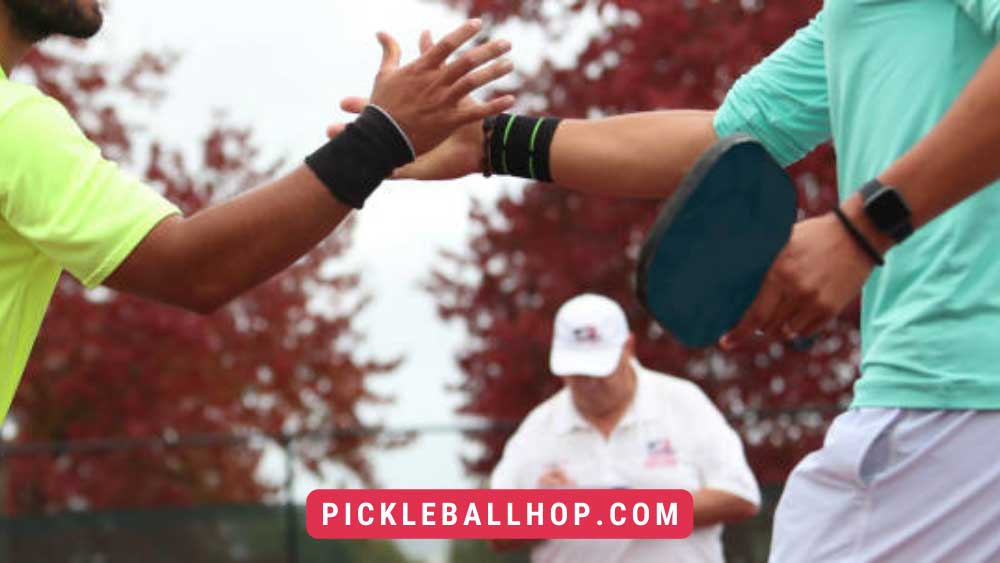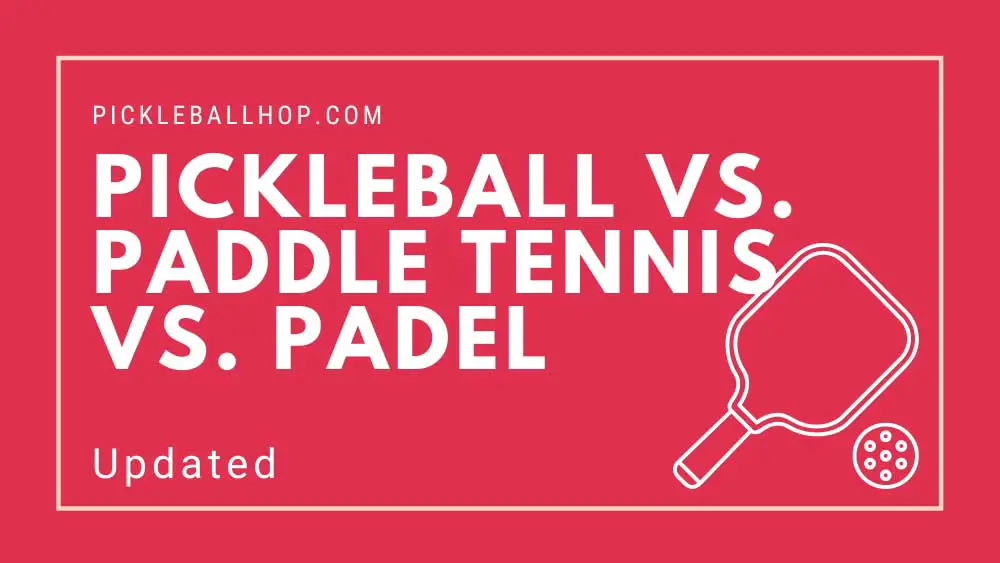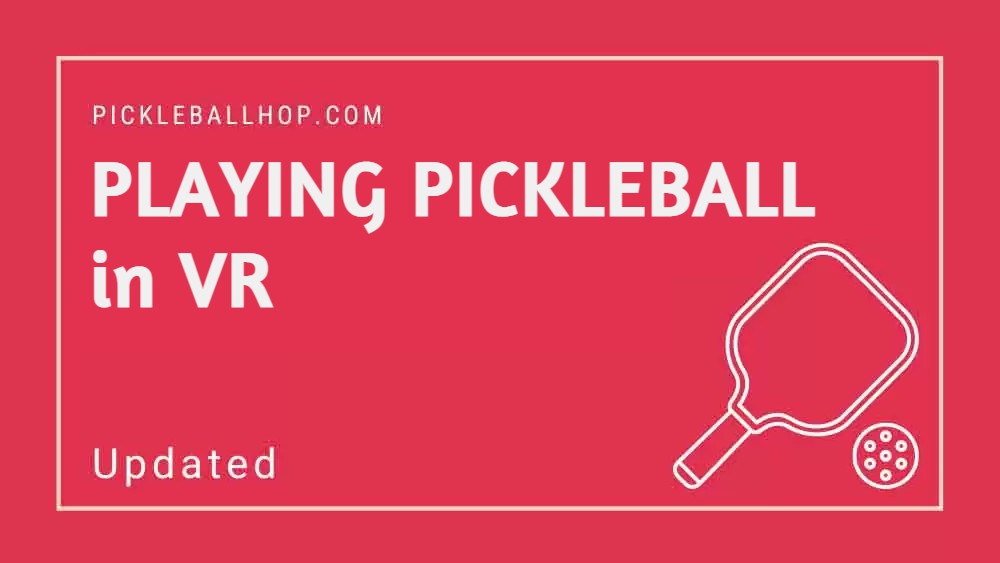Have you just started playing pickleball and don’t understand why players are constantly giving each other signals? If you want to up your game, you might want to learn how to signal like a pro. It is often confusing for new pickleball players or spectators to use these strange hand signals. What these hand signals are, how they work, and why they are useful will be explained.
As well as physical skills, reflexes, and practice, pickleball is also a game of strategy. Despite that, players follow some etiquette and tricks to enjoying their games. The moments of surprise are sometimes followed by moments of unmatched sportsmanship. It is this reason that the game has spread like wildfire across the country.
Discover how pickleball hand signals add fun and intrigue to this game.
What Are Pickleball Hand Signals?
 Doubles games use hand signals as code words through hand movements and gestures. Hand signals are used to communicate with a partner without revealing their strategy to the opponent. To gain an advantage over their opponents, they use this strategy. It is common for pro doubles teams to use them, but they can be used by any player at any level.
Doubles games use hand signals as code words through hand movements and gestures. Hand signals are used to communicate with a partner without revealing their strategy to the opponent. To gain an advantage over their opponents, they use this strategy. It is common for pro doubles teams to use them, but they can be used by any player at any level.
Your team’s plan and execution are the only things that matter for maximizing results. Despite popular belief, hand signals in pickleball are not regarded as cheating.
Switching while stacking is most commonly accomplished with hand signals in strategic games.
Hand signals can also be used for other purposes. There are other types of hand signals used for line calls as well. They are used by players to determine whether the ball is ‘in’ or ‘out’ of the court.
First, let’s talk about pickleball hand signals for stacking/switching.
Pickleball Stacking Hand Signals (For Switching)
Stacking and switching are both used when playing pickleball to maximize benefits. Moving to a better side allows the players to perform at their best.
Pickleball stacking is explained here in case you don’t know what it is.
Switching, however, involves a certain amount of surprise. The shot you were intended for your partner can be suddenly hit by your partner.
If the right-side players return the serve, they move to the left side and the left-side players move to the right side.
There is also a question about hand signals in pickleball: Who will give them? Signals are given by the person closest to the net since they can turn their hands behind their backs to hide their signals.
Despite the fact that hand signals are not governed by any set rules. Here are a few hand signals that are commonly used.
Hand Signal for Switching: Open Hand Signal
The open hand signal involves showing your partner your open palm at the back of your hand. When you give this signal, you are wanting him to cover your side while you switch sides. Once your partner verbally shouts YES or NO, you will not move your hand.
You have no idea if your partner is focusing on you or your signal as the front player. You have to encourage your partner to answer loudly with ‘YES’ or ‘NO’ to make this tactic successful.
You may enjoy reading Best Selkirk Pickleball Paddles
Hand Signal for Staying on Your Side: Closed Hand or Fist
As soon as you make a fist at your partner’s back, you will inform them that you will not switch sides, and you will play your own side.
Listen carefully to your partner’s response, and do not move until you find out what he or she has to say.
Remember: Signal every time you change sides, even if you’re on your own side. It is easy for your opponents to understand if you only signal when switching.
Fake Switch/False Hand Signal
People are also known for faking switches when they actually intend to stay. A hand signal is also used for this. You’ll throw your opponent off a bit before he or she can predict what you’re going to do. Opening and closing your hand repeatedly is the hand signal for a fake switch.
To achieve the best results, communication is essential.
Benefits of Switching
It will be a pleasant surprise for you and confuse your opponent if you switch. In order to confuse your opponent, you can switch sides suddenly, decide not to switch sides, or pretend to switch sides. You will get a lot of advantages because your opponent will not know what you will do next.
You can also strengthen your strong zones and cover your weak points by switching sides. However, don’t do it so frequently that your opponents begin to expect it.
Disadvantages Of Switching
It is possible to benefit from switching techniques while at the same time causing some issues with your game.
Due to all the movement, the ball may not be very clear when you are running to switch positions with your partner. In a similar manner, if you do not listen to your partner’s clear reply, or if your partner misses your hand signal. The other side of the court may be left empty if you both end up on the same side.
Communication is the key to using this winning strategy. In order to understand and follow the signals, both players need to be on the same page. Since you can develop a relationship with players you often play with, this switching is ideal for players you are familiar with.
You may enjoy reading How To Find Pickleball Courts Near Me
Hand Signals for Line Call
 Despite the referee’s presence, the players make the line call. It is common for players to make this call using hand signals. In order to call the ball “OUT,” players must be able to see that it has left the line.
Despite the referee’s presence, the players make the line call. It is common for players to make this call using hand signals. In order to call the ball “OUT,” players must be able to see that it has left the line.
An ethics code for line calls can be found in the USAPA rulebook. Any doubt or objection will result in the ball being called “In.” . The opponent will receive the benefit of the doubt if there is a doubt.
Pickleball Hand Signals for In or Out
- In order to call the ball ‘IN,’ the palm, thumb, or index finger should be pointing downward.
- Players call the ball ‘OUT’ by pointing upwards or in its direction.
Why Are Hand Signals Used in Line Calls?
Voice calls and hand signals are the most commonly used methods of communication in line calls. For line calls, using a hand signal is preferred, especially when playing with deaf or hard-of-hearing partners.
You should use hand signals to call a ball out when others cannot hear you due to noise.
Final Thoughts
The best way to outsmart your opponents is to use hand signals. However, the technique should be planned and practiced until it appears effortless. Even if you’ve used signals, it’s best to shout “switching” at the last moment so the other person can hear you.
For line calls, hand signals are used more for their convenience and ability to be heard even in noise.
Hand signals will be explained in this article, so you won’t have any doubts or confusion about them. Having learned what signals mean and how to use them, now you know how to make the most of them. It’s crucial to learn how to use hand signals effectively if you’re interested in becoming a professional pickleball player.



